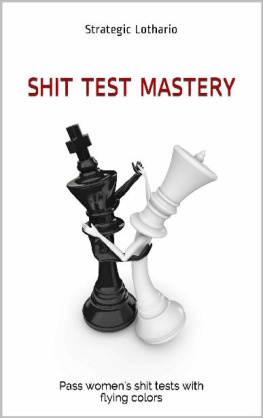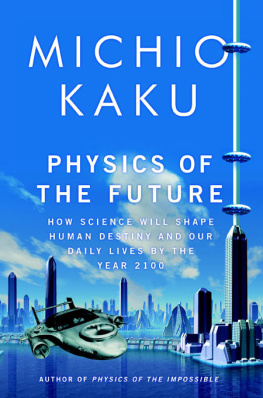
Australia
HarperCollins Publishers (Australia) Pty. Ltd.
25 Ryde Road (PO Box 321)
Pymble, NSW 2073, Australia
http://www.harpercollinsebooks.com.au
Canada
HarperCollins Canada
2 Bloor Street East - 20th Floor
Toronto, ON, M4W, 1A8, Canada
http://www.harpercollinsebooks.ca
New Zealand
HarperCollins Publishers (New Zealand) Limited
P.O. Box 1
Auckland, New Zealand
http://www.harpercollinsebooks.co.nz
United Kingdom
HarperCollins Publishers Ltd.
7785 Fulham Palace Road
London, W6 8JB, UK
http://www.harpercollinsebooks.co.uk
United States
HarperCollins Publishers Inc.
10 East 53rd Street
New York, NY 10022
http://www.harpercollinsebooks.com
Is it Just Me or is Everything Shit?
Is it Just Me or is Everything Shit: Volume 2
Is it Just Me or Has the Shit Hit the Fan?
Blighty: A Cynics Guide to Britain
Sorry, But Has There Been a Coup?
The mouse that did not roar, but instead made another surprising animal noise
This was no ordinary mouse. In January 2012, Japanese scientists announced they had genetically engineered a new kind of mouse. A mouse unlike other mice. Those mice squeaked. Not this mouse. This mouse went where no other mouse had, sonically speaking, gone before. This mouse tweeted, like a bird.
Lead researcher Arikuni Uchimura of Osaka Universitys well-named School of Frontier Biosciences said of the process that led to this fantastical creation: We have cross-bred the genetically modified mice for generations to see what would happen.
Thats right: they wanted to see what would happen. And what did happen? A mouse tweeted like a bird. Its fucked up.
Biotech which is short for biotechnology, which is short for biological technology, which is not short for anything is running wild. The building blocks of nature are a minefield. And the minefield is on fire. Not a day goes by without a headline like Genetic breakthrough could slow or halt the ageing process or Why hating brussels sprouts could be in your DNA or Glowing Cats Shed Light On AIDS. (I deliberately didnt look at that last story preferring my own reverie.)
The mysteries of life itself are being unravelled before our eyes. Think of the ramifications, and also the implications. We are gaining the ability to mess with human genes possibly changing characteristics, for good or ill, for generations to come.
Some call this playing God. But why should we not play God? Why should He have all the fun? Maybe He was wrong in having the mice squeak and birds tweet. Maybe its time to mix that whole game right up. From now on, maybe we should treat mice that merely squeak with the disdain they deserve.
But who gets to play God? Many bleeding-edge geneticists have a sort of punk-rock DIY libertarian aesthetic that favours posting gene codes on the Internet so anyone can knock up new strains in the garage. Its a world of out-there ideas. Veteran future-watcher and renowned Princeton physicist Freeman Dyson believes the biotech revolution will be fun, and educative: he believes we should welcome gene-splicing kits in the homeplace. He even joyfully envisages biotech kids games where you give the child some eggs and seeds and a kit for writing the genomes and see what comes out.
See what comes out? See what comes out? Ill tell you whatll come out of giving children the power to bend nature: a catalogue of horrors, thats what. Jurassic Park? Jurassic Fucking Reindeer-Shark, more like.
What can we learn from the really weird animals?
Like latterday Dr Dolittles, life scientists seem to want to talk to the animals, by making animals that talk. Or at least, animals that glow in the dark.
Life science has acquired an odd public reputation forever synonymous with importing rabbits and mice on ferries for kicks. But the life scientists are certainly getting up to some pretty intriguing experiments. Most experiments are, when all is said and done, tedious as all hell. But these are experiments. Its like theyre on E, but with the E standing for Experiment. Or Extreme Shit Being Done With Animals.
Scientists in the Netherlands have injected cows with the protein lactoferrin derived from humans. Found in breast milk and tears, this little bit of Homo sapiens would allegedly help boost cows immune systems. (Cows swimming with human tears? Its already happened.) Goats on a farm run by Utah State University have been genetically modified with spider genes so they produce silk in their milk. You think its milk, but no its silk! Or, at least, silky milk (milky silk?). Then there is ANDi, the worlds first transgenic monkey (transgenic means combining genes).
ANDi, whose name contains DNA backwards, was born following experiments conducted by researchers at the Oregon Health and Science University. ANDi was no common or garden transgenic monkey: he was a transgenic monkey with some jellyfish DNA spliced into him. That is, jellyfish DNA was cut and pasted literally into monkey DNA. If you hold a torch up to ANDi, he glows a bit green.
So on some levels these animal experiments seem quite mind-bending, and on others a bit silly. In choosing to create a chimerical mythic creature anew the scientists eschewed classical models like the Chimera itself lion, goat and snake in favour of a slightly fluorescent monkey. (Of course, slightly fluorescent monkeys could easily lead on to slightly fluorescent human beings: not just useful for finding people in the dark, but also fun in the bedchamber.)
What the scientists love most, though, is fucking up mice. Everyone remembers the most famous transgenic mouse, the so-called Vacanti mouse (named after its inventor, the MIT professor Charles Vacanti), burdened with what appeared to be a ruddy great human ear on its back. This mouse had a ruddy great ear on its back, but couldnt even hear through it. So thats odd. In a full-page New York Times ad one anti-testing group labelled this striking image an actual photo of a genetically engineered mouse with a human ear on its back which was actually incorrect. The ear was just cartilage grown into the shape of a human ear, although you can sort of see how this misapprehension might have taken hold, what with it looking like a mouse with an ear on its fucking back.
Anyway, transgenic mice are everywhere. In 2007, biologists in Cleveland conjured up a so-called supermouse that could run six kilometres without pausing for breath or sustenance. Thats one hell of a useful mouse. It could carry very small packages or messages on paper. Hang on, theres e-mail for that. Its useful. Itll come to me
So-called smart mice have been engineered at Princeton. Altered with an extra gene that boosts the neurotransmitter NMDA (N.B., not MDMA that would be a different experiment entirely), the mice get a brainpower boost and outperform ordinary mice in various mouse-cleverness tests. Sadly, they also scare more easily. Meanwhile, Larry Young at Emory University transferred a gene from the monogamous prairie vole into the hitherto promiscuous lab mouse and created monogamous mice. So theres a lot of stuff going on with mice. Less shagging around, in one instance.
But this is not just mutants for mutants sake (not always). Some of these experiments on animals are showing humanity a brave new dawn in the here and now. Geneticists also based in Cleveland are producing transgenic mosquitoes that do not carry malaria, which in Cayman Island trials have started squeezing out mosquitoes that do. So thats good, because malaria is bad.
Next page





![Stack - It is just you, everythings not shit: [a guide to all things nice]](/uploads/posts/book/253795/thumbs/stack-it-is-just-you-everything-s-not-shit-a.jpg)





